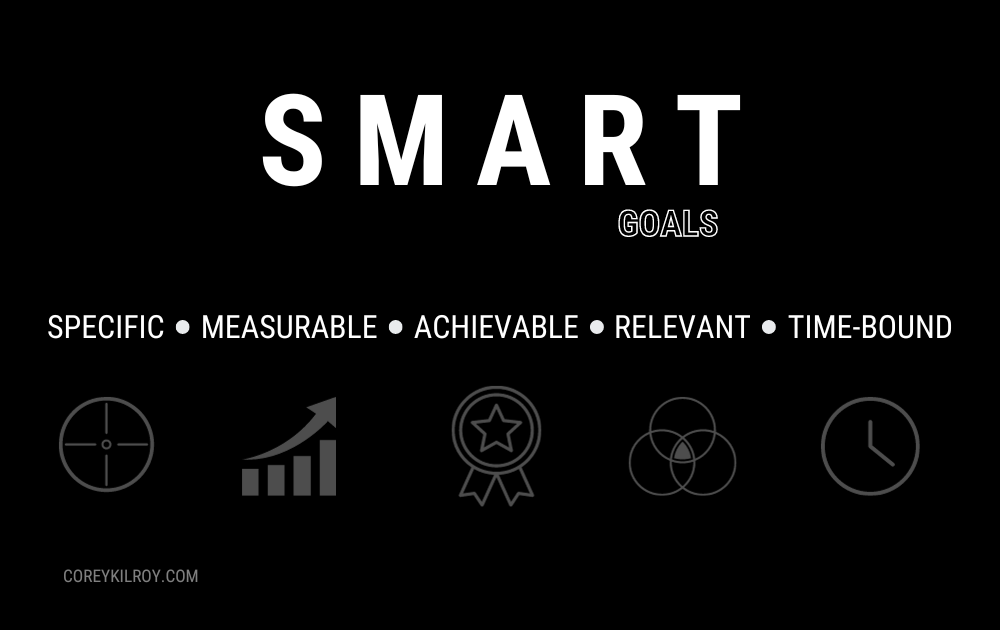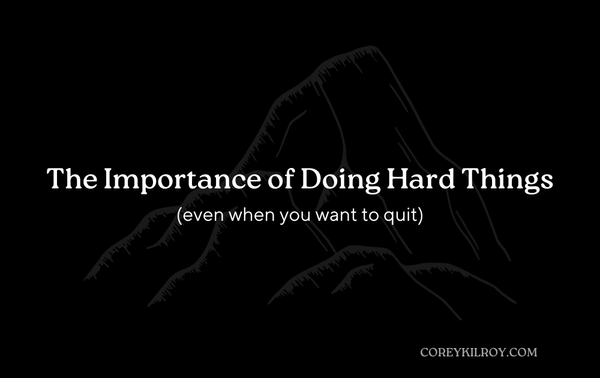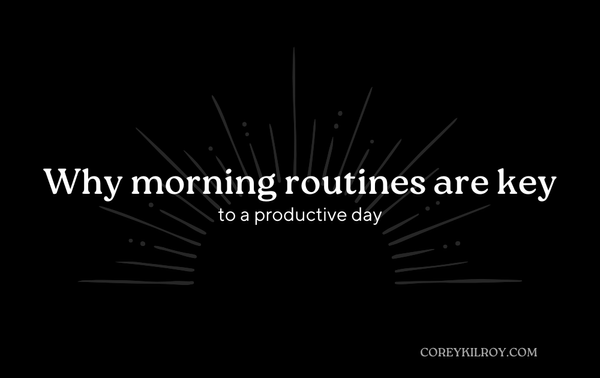How to Use SMART Goals.

One of my favorite ways to set goals for myself is by using S.M.A.R.T. goals.
SMART Goals are statements of specificity that explain what you are working to accomplish. It can be broken down by the mnemonic – well, you guessed it… SMART:
- Specific - What will be accomplished? What actions will you take?
- Measurable - What data will measure the goal? How much? How well?
- Achievable - Is the goal doable? Do you have the necessary resources to accomplish this?
- Relevant - How does the goal align with broader goals? Why is the result important?
- Time-Bound - What’s the time frame for accomplishing this goal?
How do I decide the right scope for my SMART Goals? (How big? How many?)
SMART goals are meant to address all of your major job responsibilities to accomplish the goal.
Reminder, goals are intended to focus attention and resources on what is most important
so that you can be successful in achieving your priorities.
Common types of goals are to:
- Create something
- Increase something
- Improve something
- Decrease something
- Save something
- Develop someone (or yourself)
How to Write a SMART Goal
S - Specific
When setting a goal, be specific about what you want to achieve.
Think about it as your mission statement for the goal.
This isn’t a step-by-step list of how you’re going to meet your goal, but it should include answers to the 5 popular “W” questions.
- Who – Who needs to be involved in order to achieve the goal? Who is going to help you get to that finish line?
- What – What are you truly trying to accomplish? Don’t be afraid to add some detail here.
- When – You’ll get more specific about this under the “T” section of SMART, but for now, set a proper time frame for when you’ll accomplish this goal.
- Where – This question may not always apply, especially for personal goals, but if there’s a location or event, identify it here.
- Why – What is the reason for the goal? What’s the driving force behind it all?
In short, specific goal answers questions like:
- What needs to be accomplished?
- Who’s responsible for it?
- What steps need to be taken to achieve it?
Thinking through these questions helps get to the heart of what you’re aiming for.
Here’s an example of a specific goal Tom might come up with:
M - Measurable
What data are you going to collect to determine if you meet your goal?
This allows you to measure and quantify progress, making the goal a bit more tangible and easier to know when you’ve reached the finish line.
A - Achievable
This is the point of the process that gives you a serious reality check.
It focuses on how important the goal is to you and what you can do to actually attain the goal.
This may require you to develop new skills and changing attitudes.
Ask yourself:
- Is your objective something that you can reasonably accomplish?
- How can you accomplish this goal?
- Do you have the skills/tools needed to accomplish it?
- If not, what can you do to attain them? Who can you get in contact with?
R - Relevant
This is where you need to take a step back and think about the bigger picture.
- How does the goal align with broader goals?
- Why is the result important?
- Why are you setting the goal in the first place?
T - Time-Bound
Anyone can set goals, but if it lacks realistic timing, there’s a higher chance of you not succeeding.
To properly measure success, you need to be sure of when you want the goal to be reached.
- What’s your time horizon?
- When will you finish?
By giving yourself a deadline, this prevents you from procrastinating and provides a sense of urgency that you will get it done when you said you would.
SMART goals should have time-related parameters built in.
This makes sure you stay on track within a designated time frame.
When Tom incorporates this time frame, his SMART goal is complete:
🏁 In the end…
Goal setting focuses your learning of knowledge and helps you organize your time and resources so you can make the most of your time.
By setting defined and specific goals, you’re able to properly track progress and take achievement for accomplishing those goals.
You'll see forward progress in what might previously have seemed a long and pointless grind.
By using the SMART framework, it will guide you and set you up for success in accomplishing any goal in life, not matter how big or small.
Until Next Time, C.



